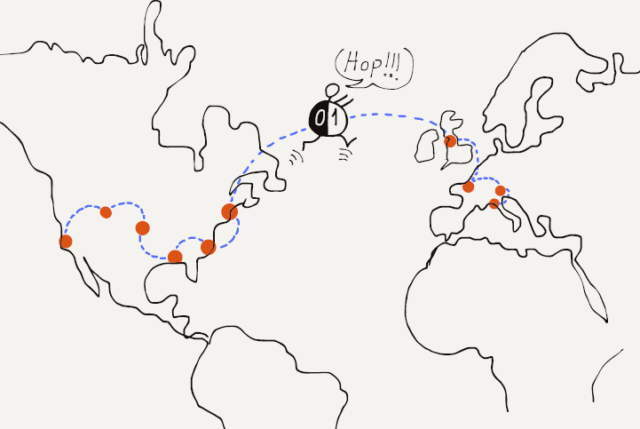So when we combine all this together we can understand the basic operation of today’s Internet. We have specialized computers called “routers” that know how to route packets along a path from a source to a destination. Each packet will pass through multiple routers during its journey from the source computer to the destination computer.
Even though the packets may be part of a larger message, the routers forward each packet separately based on its source and destination addresses. Different packets from the same message may take different routes from the source to the destination. And sometimes packets even arrive out of order; a later packet might arrive before an earlier packet, perhaps because of a data “traffic jam”. Each packet contains an “offset” from the beginning of the message so that the destination computer can reassemble the packets in the correct order to reconstruct the original message.
By creating a network using multiple short hops, the overall cost of communicating across a large geographical area could be spread across a large number of connecting groups and individuals.
Normally, packets would find the shortest path between the source and destination, but if a link on that path was an overloaded or broken, the routers could cooperate and reroute traffic to take slightly longer paths that would get packets from a source to a destination as quickly as possible.
The core of the Internet is a set of cooperating routers that move packets from many sources to many destinations at the same time. Each computer or local area network is connected to a router that forwards the traffic from its location to the various destinations on the Internet. A router might handle data from a single computer like a smartphone, from several computers in the same building, or from thousands of computers connected to a university campus network.

The term “Internet” comes from the idea of “internetworking”, which captures the idea of connecting many networks together. Our computers connect to local networks and the Internet connects the local networks together so all of our computers can talk to each other.